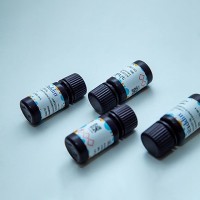Initial Stages of Angiosperm Greening Monitored by Low-Temperature Fluorescence Spectra and Fluorescence Lifetimes
互联网
656
In Angiosperms, the reduction of protochlorophyllide (Pchlide) to chlorophyllide (Chlide), a penultimate reaction of chlorophyll biosynthesis, is catalyzed by a photoenzyme Pchlide oxidoreductase (POR) and completely inhibited in darkness. This reaction plays also a regulatory role in plant morphogenesis. In the case of dark-grown Angiosperms, Pchlide is accumulated, mainly in the form of complexes with NADPH and POR but also as an unbound pigment. Etioplasts that develop in the place of chloroplasts in the dark contain a highly organized lipid structure termed prolamellar body (PLB), which is the main site of accumulation of the ternary Pchlide:POR:NADPH complexes. An illumination triggers the photoreduction of Pchlide molecules which are bound to the ternary complexes. This is followed by a set of biochemical reactions and structural changes leading to Chl synthesis that can be monitored with fluorescence techniques. This chapter describes the application of low-temperature fluorescence spectroscopy and fluorescence lifetime measurements for monitoring the Pchlide to Chlide conversion in isolated prolamellar bodies. These techniques enable the analysis of heterogeneity of accumulated pigments: Pchlide and Chlide that reflect the different organization of pigment–protein complexes.









